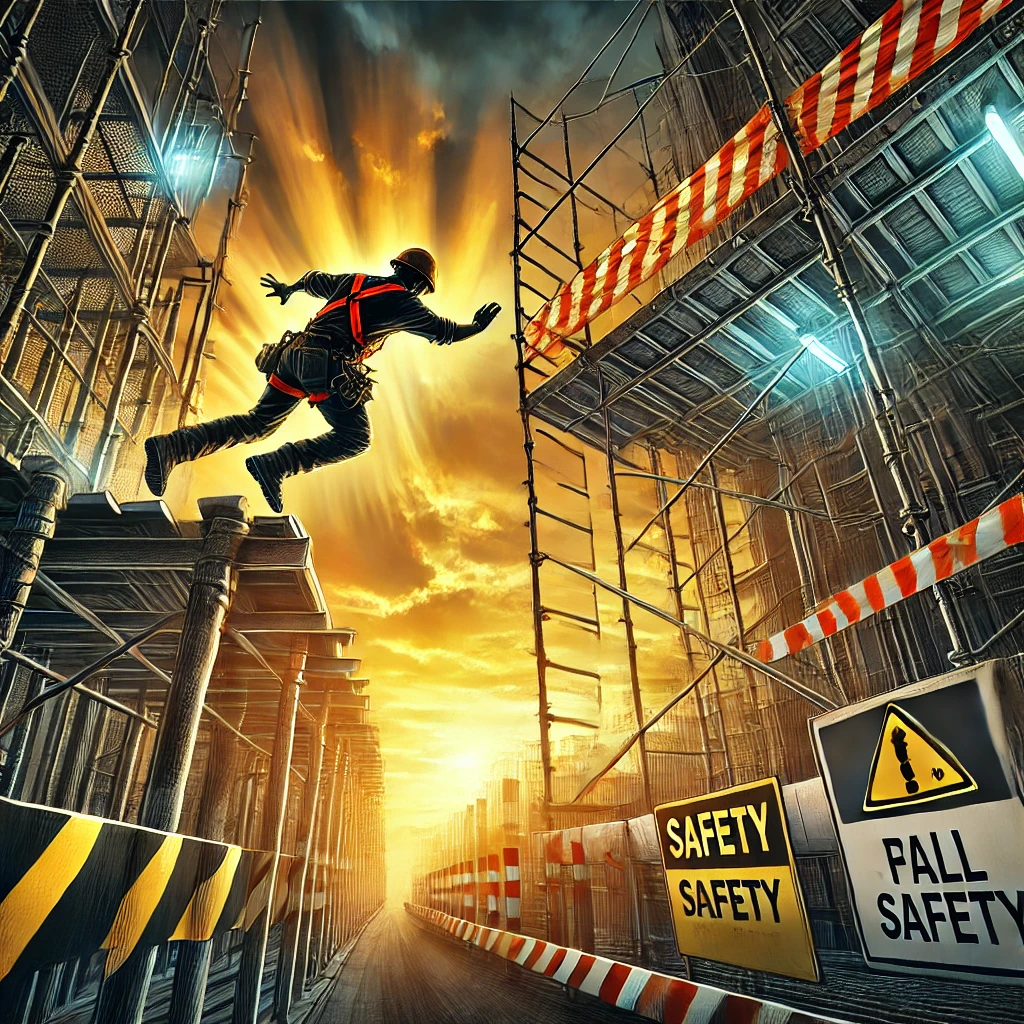The Hidden Dangers: Understanding Non-Traffic Accidents in the US
When we think of motor vehicle accidents, we often picture highways, busy intersections, or reckless drivers on the open road. But there’s a lesser-known and equally concerning type of accident happening right in our neighborhoods, parking lots, and recreational spaces: non-traffic accidents. These incidents, which occur off public roads, can have devastating consequences—and they deserve more attention.
What Are Non-Traffic Accidents?
Non-traffic accidents involve motor vehicles but happen in locations outside the traditional “trafficway.” These include:
- Private property: Driveways, parking lots, or private roads
- Off-road areas: Fields, construction sites, or recreational zones
Examples of non-traffic accidents include:
- A pedestrian struck by a vehicle backing out of a driveway
- A child hit in a busy parking lot
- An ATV rollover in a field
While these accidents may seem less common, the statistics paint a stark picture.

The Alarming Statistics
The National Highway Traffic Safety Administration (NHTSA) reports that between 2016 and 2020, an average of 2,449 people lost their lives annually in non-traffic motor vehicle crashes. Additionally, nearly 87,000 individuals suffered injuries each year during the same period.
One of the most vulnerable groups involved in these incidents are pedestrians and cyclists, accounting for roughly one-third of all fatalities and injuries in non-traffic accidents. Children, in particular, face heightened risks, often as victims of driveway or parking lot accidents.
Why Do These Accidents Happen?
Several factors contribute to the occurrence of non-traffic accidents, including:
- Reduced vigilance: Drivers may let their guard down in non-traffic areas, assuming they’re safer than public roads.
- Children at play: Residential areas and parking lots often attract children, increasing the chances of tragic accidents.
- Reversing vehicles: Limited visibility while backing up, especially in driveways or crowded lots, is a leading cause.
- Distractions: Just like on public roads, distractions such as texting or talking on the phone can lead to devastating outcomes.
These accidents often occur in places where drivers feel most comfortable—places they might not associate with danger.
How Can We Prevent Non-Traffic Accidents?
Reducing non-traffic accidents requires a combination of awareness, education, and action. Here are some key steps to help prevent these incidents:
- Stay vigilant: Always remain alert, even in areas that feel “safe” or familiar.
- Practice safe driving: Drive slowly, check blind spots, and use caution when reversing. Avoid distractions like cell phones.
- Supervise children: Whether in driveways, parking lots, or recreational spaces, ensure children are closely monitored.
- Raise awareness: Share information about the risks of non-traffic accidents with friends, family, and your community.
Small changes in behavior can make a big difference in preventing these often-overlooked tragedies.
Conclusion
Non-traffic accidents may not dominate news cycles, but their impact is profound. By understanding the risks and adopting preventive measures, we can protect vulnerable individuals and create safer communities.
Let’s commit to being more mindful, both on and off the road.
Stay informed. Stay vigilant. Stay safe.
This blog post is for informational purposes only and does not constitute legal advice.
Industrial Accidents in the U.S.: 10 Eye-Opening Statistics You Need to Know
When we think about the cost of doing business, our minds often drift to raw materials, wages, and overhead. But lurking beneath these traditional metrics lies a harrowing reality: the toll industrial accidents take on American workers and the economy. The latest data reveals a complex landscape of risks, losses, and areas where businesses can do better. Let’s delve into 10 compelling statistics that highlight the scope of industrial accidents in the United States.
1. A Sobering Reality: Fatal Occupational Injuries
In 2022, 5,486 workers tragically lost their lives on the job—a 5.7% increase from the previous year. This equates to a fatal injury rate of 3.7 per 100,000 workers, a stark reminder of the dangers lurking in certain industries. These numbers aren’t just statistics—they represent lives cut short and families forever changed.

2. Nonfatal Injuries Are Declining, But There’s a Catch
While private employers reported 2.6 million nonfatal workplace injuries and illnesses in 2023—a significant 8.4% drop—the improvement largely stems from a sharp decline in illness cases. Workplace safety remains a pressing issue, particularly as injuries still account for a significant portion of the total incidents.
3. Transportation Incidents: The Silent Killer
Transportation incidents stand as the leading cause of workplace fatalities, responsible for 1,369 deaths in 2022. From trucking accidents to roadway incidents, these tragedies underscore the need for better training and safety standards for workers on the move.
4. The Persistent Threat of Falls, Slips, and Trips
Falls, slips, and trips claimed 865 lives in 2022, highlighting a pervasive issue in industrial settings. The data calls for stricter adherence to fall prevention protocols and better equipment to protect workers from preventable accidents.
5. Violence in the Workplace
Shockingly, workplace homicides accounted for 524 deaths in 2022. This statistic illustrates the need for robust workplace violence prevention programs and security measures to ensure every worker feels safe on the job.
6. High-Risk Industries: Logging and Fishing
Some jobs are inherently riskier than others. Logging leads the pack with a staggering fatality rate of 82.2 deaths per 100,000 workers, followed by fishing and hunting at 75.2 per 100,000. These professions demand not only physical endurance but also unwavering vigilance against the constant threat of danger.
7. Economic Impact: The $198 Billion Price Tag
Beyond the human cost, industrial accidents create a massive economic burden. U.S. businesses lose an estimated $198.2 billion annually due to workplace injuries and illnesses. This includes lost productivity, medical expenses, and insurance payouts—money that could be reinvested in safer practices and innovations.
8. OSHA’s Uphill Battle
The Occupational Safety and Health Administration (OSHA) oversees the safety of 130 million workers across 8 million worksites—but with only about 1,850 inspectors, that’s one officer for every 70,000 workers. This imbalance underscores the need for businesses to take proactive responsibility for workplace safety.
9. Breakdown of Fatalities by Cause
Transportation incidents, falls, and contact with objects or equipment are the top three killers in the workplace. Each of these causes is preventable with the right combination of training, technology, and oversight.
10. Long-Term Impacts on Workers
Industrial accidents leave a long shadow. A Washington state study found that injured workers lost an average of 1.06 years of productivity over a 14-year span. For many, the effects of workplace injuries go far beyond the immediate incident, impacting livelihoods and mental health for years.
Turning Statistics Into Action
These numbers tell a sobering story—but they also point the way to a safer future. By implementing robust safety measures, fostering a culture of vigilance, and investing in worker training, businesses can turn the tide against industrial accidents. The cost of prevention is far lower than the cost of lives lost, families shattered, and billions drained from the economy.
Let’s make a commitment to these workers—the backbone of our industries—and strive to reduce these numbers. Every injury prevented is a step toward a more humane and productive workplace. Together, we can make these statistics a thing of the past.
The Hidden Costs of Progress: 10 Startling Facts About Industrial Accidents in the U.S.
Industrial accidents have long shaped the narrative of workplace safety in the United States. They are stark reminders of the price we pay for progress and the importance of vigilance in industries that fuel our economy. From catastrophic explosions to lingering health crises, these incidents teach lessons that resonate far beyond the factory walls. Here are 10 eye-opening facts about industrial accidents that reveal their profound impact on our society, economy, and environment.

1. The Deadliest Day: The Texas City Disaster
In 1947, a devastating explosion in Texas City shook the nation. A fire aboard the SS Grandcamp ignited its cargo of ammonium nitrate, causing a massive blast that killed nearly 600 people and injured over 5,000. The disaster remains the deadliest industrial accident in U.S. history and serves as a haunting example of the risks associated with hazardous materials.
2. The Fire That Changed Labor Laws
The 1911 Triangle Shirtwaist Factory fire in New York City killed 146 garment workers, many of whom were young immigrant women. Locked doors and inadequate fire escapes trapped workers inside. This tragedy became a catalyst for major workplace safety reforms, shaping the labor protections we often take for granted today.
3. The Ripple Effect of Bhopal
While the 1984 Bhopal disaster occurred in India, its aftermath reverberated in the U.S. The scale of the tragedy, which killed thousands, spurred the creation of the Emergency Planning and Community Right-to-Know Act of 1986, a cornerstone of U.S. industrial safety laws.
4. OSHA: A Game-Changer in Workplace Safety
Before the establishment of the Occupational Safety and Health Administration (OSHA) in 1970, workplace safety standards were patchy at best. Since OSHA’s inception, workplace fatalities have decreased by over 60%, highlighting the agency’s critical role in preventing industrial tragedies.
5. The Lingering Scourge of Black Lung
Coal miners have long been plagued by black lung disease, a result of prolonged exposure to coal dust. Despite decades of regulation, thousands of cases persist, underscoring the importance of continuous monitoring and stricter enforcement in the mining industry.
6. Deepwater Horizon: A Modern-Day Tragedy
The 2010 Deepwater Horizon explosion killed 11 workers and unleashed one of the worst environmental disasters in history. Beyond the human and ecological toll, the incident cost tens of billions of dollars and demonstrated the dire consequences of lapses in offshore drilling safety.
7. A Nation of Chemical Hazards
More than 12,000 facilities across the U.S. handle hazardous chemicals, many located near densely populated areas. The sheer volume of these facilities underscores the constant risk of industrial accidents and the need for robust safety protocols to protect communities.
8. Weekly Explosions: A Grim Statistic
The Chemical Safety Board reports an average of one significant industrial explosion or fire every week in the U.S. These incidents often go unnoticed by the general public but represent a persistent and alarming risk to workers and the environment.
9. The Billions We Pay
Industrial accidents impose a hefty financial burden on businesses, costing billions annually in fines, lost productivity, lawsuits, and insurance premiums. These costs ripple through industries, impacting everyone from workers to consumers.
10. Hurricane Katrina’s Unseen Impact
When Hurricane Katrina struck in 2005, it damaged numerous industrial plants in Louisiana, leading to spills and explosions that compounded the disaster’s environmental and economic toll. This event highlighted the vulnerability of industrial infrastructure to natural disasters and the urgent need for resilience planning.
Why These Stories Matter
Industrial accidents are more than isolated events—they are windows into systemic failures and opportunities for change. Each disaster tells a story of preventable risks, lives lost, and lessons learned. While progress has been made, the frequency and severity of these accidents reveal that much work remains to be done.
We must demand accountability from industries and policymakers to ensure that safety standards evolve with changing technologies and risks. Whether through tighter regulations, better enforcement, or innovative safety solutions, the goal must always be to protect workers, communities, and the environment.
By understanding the history and impact of industrial accidents, we can work toward a future where such tragedies become relics of the past.
What Do You Think? Have you or someone you know been impacted by an industrial accident? Share your story or thoughts in the comments below. Let’s keep the conversation going—because awareness is the first step toward change.
The Unsung Heroes of Workplace Safety: How Unions Protect Workers and Prevent Accidents
When you think of workplace safety, you might imagine hard hats, warning signs, and safety drills. But behind these visible measures often lies the quiet, tireless work of labor unions. For over a century, unions have been a driving force in creating safer workplaces and protecting workers from harm. Their impact extends beyond individual workplaces, shaping laws and standards that benefit entire industries and communities.
In this blog post, we’ll explore the vital role unions play in promoting workplace safety, the methods they use to prevent accidents, and the benefits of their advocacy for all workers—whether they’re union members or not.

Why Workplace Safety Matters
Workplace safety is more than just a set of rules; it’s about protecting lives, livelihoods, and families. According to the International Labour Organization (ILO), 2.3 million people die annually from work-related accidents or diseases. Many of these tragedies are preventable with the right measures in place.
Safety doesn’t happen by chance—it requires commitment, vigilance, and, often, pressure on employers to prioritize it. This is where unions step in.
How Unions Promote Workplace Safety
-
Collective Bargaining for Safety Standards One of the most direct ways unions improve workplace safety is through collective bargaining. By negotiating contracts that include specific safety measures, unions ensure that workers have access to necessary equipment, training, and policies. For example, many union contracts include requirements for regular safety inspections, protective gear, and adequate staffing to prevent overwork-related accidents.
-
Training and Education Unions often provide safety training programs for their members, equipping workers with the knowledge and skills to identify and mitigate risks. These programs are especially important in industries with high hazards, such as construction, manufacturing, and healthcare.
-
Empowering Workers to Speak Up Unions give workers a voice to report unsafe conditions without fear of retaliation. Through grievance processes and protections against wrongful termination, unions empower employees to advocate for safer workplaces.
-
Advocacy for Stronger Laws and Regulations Beyond individual workplaces, unions lobby for laws and regulations that protect all workers. From securing the eight-hour workday to pushing for OSHA (Occupational Safety and Health Administration) standards, unions have been instrumental in shaping labor laws that prioritize safety.
-
Monitoring and Enforcement Many unions establish safety committees to monitor workplace conditions and enforce safety protocols. These committees work alongside employers and regulatory agencies to ensure compliance and address hazards promptly.
Real-Life Examples of Union Impact
The Coal Mining Industry
In the early 20th century, coal mining was one of the deadliest industries in the United States. Unions like the United Mine Workers of America (UMWA) fought for ventilation systems, safer equipment, and emergency protocols. Today, mining fatalities have decreased dramatically, thanks in large part to union advocacy.
Healthcare Workers During the Pandemic
During the COVID-19 pandemic, unions representing healthcare workers demanded adequate personal protective equipment (PPE) and policies to limit exposure risks. Their efforts not only protected frontline workers but also improved patient care.
Benefits for Everyone
Even non-union workers benefit from union-led safety improvements. By raising industry standards, unions create ripple effects that improve conditions across the board. For example, the push for ergonomic standards in the workplace has led to better equipment design and reduced repetitive strain injuries for millions of workers.
The Path Forward: Supporting Unions, Supporting Safety
As we navigate the challenges of an evolving workplace, from automation to climate change, unions remain a crucial partner in ensuring safety. By supporting union efforts and advocating for worker-friendly policies, we can continue to protect lives and prevent accidents.
Workplace safety is everyone’s responsibility, but it’s unions that have consistently championed it. Their work reminds us that behind every safe shift, every accident avoided, and every life saved, there’s a legacy of collective effort and unwavering dedication.
What do you think about the role of unions in workplace safety? Share your thoughts in the comments below!
Understanding Industrial Accidents: What They Are and What to Do If You're a Victim
Industrial accidents are unfortunate events that can occur in any workplace, particularly in industries involving heavy machinery, hazardous materials, or high-risk environments. These accidents range from minor injuries to catastrophic incidents, often resulting in severe consequences for employees, employers, and the surrounding community.
This article provides an overview of industrial accidents and offers a practical checklist for what to do if you are a victim of such an incident.
What Are Industrial Accidents?
An industrial accident is any unplanned event that causes injury, illness, or property damage in a workplace. Common types of industrial accidents include:
- Slips, trips, and falls: Often caused by wet floors, uneven surfaces, or poor lighting.
- Machinery-related accidents: Entanglement, crushing, or cutting injuries caused by improper machine use or malfunction.
- Exposure to hazardous substances: Chemical spills, toxic fumes, or explosions resulting from improper handling or storage of dangerous materials.
- Fire and electrical hazards: Fires or shocks due to faulty wiring or neglecting safety protocols.
- Overexertion injuries: Strains or sprains from heavy lifting or repetitive tasks.
Industries such as manufacturing, construction, mining, and energy production are particularly prone to such accidents due to the inherent risks involved in their operations.

What to Do If You’re a Victim of an Industrial Accident
If you find yourself involved in an industrial accident, it’s critical to act quickly and methodically. The following checklist outlines essential steps to protect your health, rights, and future:
1. Ensure Immediate Safety
- Move to a safe location to avoid further injury.
- Alert coworkers and supervisors about the danger if the area remains hazardous.
2. Seek Medical Attention
- Call emergency services or request assistance from on-site medical personnel.
- Even if the injury seems minor, have it evaluated by a healthcare professional to rule out underlying issues.
3. Report the Incident
- Notify your supervisor or employer immediately.
- Document the incident in your workplace’s accident report log, providing detailed information about what occurred.
4. Document Everything
- Take photographs of the scene, your injuries, and any contributing factors (e.g., faulty equipment, spills).
- Collect contact information from any witnesses.
5. Understand Your Rights
- Review workplace safety protocols and any worker’s compensation policies.
- Be aware of your legal rights under workplace safety regulations such as the Occupational Safety and Health Act (OSHA) in the United States.
6. File for Workers’ Compensation
- Submit a claim as soon as possible to cover medical expenses and lost wages.
- Ensure you follow the required steps and deadlines for filing.
7. Consult an Attorney
- If negligence or unsafe working conditions caused the accident, consider seeking legal advice.
- An attorney specializing in workplace accidents can help you navigate complex legal processes.
8. Focus on Recovery
- Follow your doctor’s recommendations and attend follow-up appointments.
- Take the necessary time off work to recover fully before returning to your duties.
Preventing Industrial Accidents
While accidents are sometimes unavoidable, many can be prevented with proper planning and adherence to safety protocols. Employers and employees alike should prioritize workplace safety by:
- Conducting regular risk assessments.
- Providing safety training and personal protective equipment (PPE).
- Maintaining and inspecting equipment frequently.
- Establishing clear emergency response plans.
Conclusion
Industrial accidents are a serious matter that requires immediate and informed action. By following the checklist above, victims can protect their health and legal rights while recovering from the incident. Moreover, fostering a culture of safety and compliance in the workplace can significantly reduce the likelihood of such accidents occurring in the first place.
If you’ve been affected by an industrial accident, seek support and take the necessary steps to ensure both your well-being and your legal protections are preserved. Safety should always be the top priority for everyone in the workplace.